Leading Athlete

Can virtual reality training improve athlete skills ?
Virtual reality (VR) technology has been increasingly utilized in sports training, raising the question of whether it can improve athlete skills. The answer depends on several factors, including the type of sport and specific skills required. VR platforms offer a novel medium to develop cognitive skills such as concentration and alternating attention. They can be highly beneficial for sports requiring precision and accuracy, providing a controlled environment for repeated practice and immediate feedback. However, VR should not replace traditional physical training entirely but be used as a supplementary tool. Additionally, VR can help athletes mentally prepare for competition by simulating game scenarios and practicing decision-making skills under pressure. The effectiveness of VR training depends on various factors, and its evolution in sports training programs will be interesting to observe as technology advances.
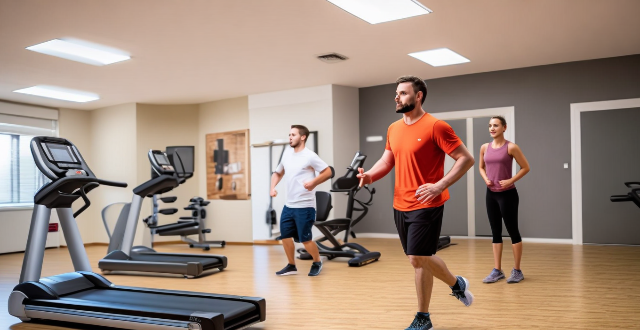
Can AI improve sports performance and athlete safety ?
Artificial Intelligence (AI) is transforming the sports industry by enhancing athletic performance and ensuring athlete safety through personalized gear design, optimized nutrition and training schedules, and injury prevention. AI's predictive capabilities help in preemptive measures against injuries, while wearable technology provides real-time data for monitoring an athlete's physical state. The future of AI in sports holds immense potential for real-time feedback, strategy adjustments, and fair play enforcement.

How do high-tech training facilities contribute to athlete development and recovery ?
High-tech training facilities contribute to athlete development and recovery by providing advanced equipment, technologies, and personalized programs. These resources help improve performance, prevent injuries, and facilitate efficient recovery.

What is the role of biometric monitoring in athlete health and fitness ?
Biometric monitoring is a valuable tool for athletes to optimize their performance, recovery, and overall well-being. By collecting and analyzing data related to an individual's physical characteristics, such as heart rate, skin temperature, and body composition, athletes can gain insights into areas where they may need improvement or make adjustments to their training regimen. Biometric monitoring can also help athletes monitor their recovery from workouts and competitions, optimize their training regimens, prevent injuries, and enhance their overall well-being. Overall, biometric monitoring plays a crucial role in athlete health and fitness by providing valuable insights into performance, recovery, training regimens, injury prevention, and overall well-being.
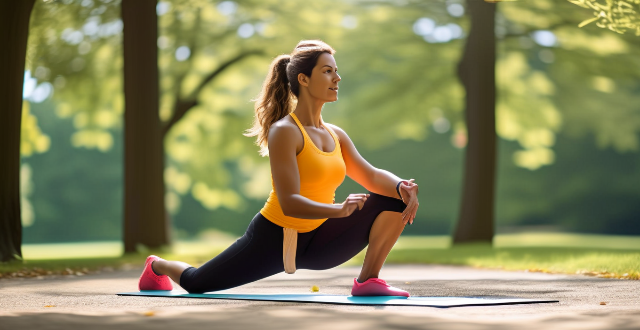
What is the best way to structure a training program for a beginner athlete ?
As an AI assistant, I can provide general guidelines and tips on how to structure a training program for a beginner athlete. Before starting any training program, it is important to set clear goals and objectives. Every training session should start with a warm-up and end with a cool-down period. Strength training should be a key component of any beginner athlete's training program. Cardiovascular training is essential for improving endurance, burning calories, and enhancing overall health. Flexibility and mobility are often overlooked but are crucial for preventing injury, improving performance, and maintaining good posture. Recovery and rest are equally important as training itself. By following these guidelines and seeking guidance from qualified coaches or trainers, beginner athletes can safely and effectively improve their fitness levels and achieve their desired outcomes.

What role does communication play in sports leadership ?
Communication is vital for sports leadership, helping achieveCommunication is vital for sports leadership, helping achievehesion, and foster a helping achieve success, build team cohesion, and foster a positive environment. Clear and concise messaging, active listening, encouragement, and motivation are key components of effective communication in sports leadership. Benefits of effective communication include increased performance, improved team cohesion, enhanced athlete development, and greater satisfaction and retention.

How do different coaching styles impact the development of high-level athletes ?
This text discusses the impact of coaching styles on high-level athlete development. It highlights different coaching styles such as autocratic, democratic, visionary, servant leadership, and transformational, discussing their advantages and disadvantages in the context of athlete development. The text emphasizes that effective coaching approaches often depend on the specific needs of athletes and team goals. Coaches should consider adapting their style based on feedback from their athletes to ensure continuous improvement and success.
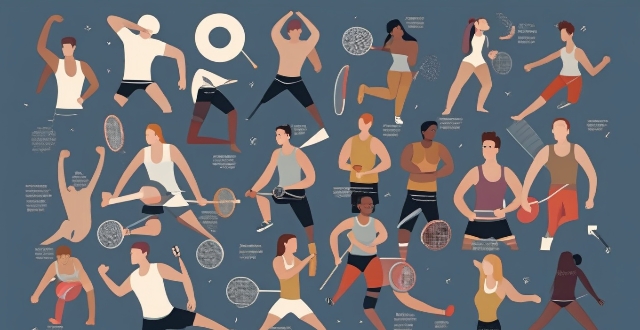
How do psychological factors influence sports performance and research ?
This document discusses the influence of psychological factors on sports performance, emphasizing the importance of motivation, confidence, concentration, resilience, and team dynamics. It highlights how these elements can enhance or hinder athletic performance and underscores the significance of research in understanding and applying psychological principles to optimize athlete mental states. The text concludes by noting the potential for ongoing research to refine our comprehension and application of psychology in sports, aiming to help athletes achieve their full potential mentally and physically.
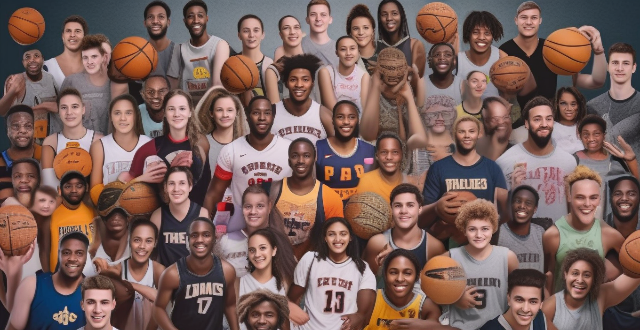
How do I become a professional athlete in basketball ?
To become a professional basketball player, start early, practice regularly, join a team or club, focus on academics and attend a good high school with a strong basketball program. Get recruited by a college program, excel in college, gain national exposure, hire an agent, and go through the draft process. Stay focused, maintain a positive attitude, and be willing to put in the work to achieve success.

What are the most common causes of sports injuries ?
Sports injuries can be caused by a variety of factors, including physical stress, poor technique, inadequate equipment, and environmental conditions. Overuse injuries occur when an athlete repeatedly performs the same motion or activity without adequate rest or recovery time. Traumatic injuries are typically caused by sudden impact or forceful contact during sports activities. Improper technique while participating in sports can increase the risk of injury. Inadequate equipment can also increase the risk of injury. Environmental conditions such as weather, terrain, and lighting can contribute to sports injuries.

How do sports movies contribute to the overall popularity of a sport ?
How do sports movies contribute to the popularity of a sport? 1. Increased Awareness: Sports movies bring attention to the sport and its athletes, leading to more people participating in the sport. 2. Inspiration and Motivation: Inspiring stories of athletes overcoming obstacles can motivate viewers to pursue their own athletic goals or try a new sport. 3. Cultural Impact: Sports movies can shape public perceptions of certain sports and make them more socially acceptable or desirable. 4. Economic Benefits: Popular sports movies can generate interest in purchasing related merchandise, attending live events, or watching televised games, leading to higher revenues for teams, leagues, and sponsors involved in the sport. 5. Entertainment Value: Sports movies provide an enjoyable viewing experience that appeals to a wide audience, attracting new fans to the sport and helping maintain its popularity over time.

What are the best sports careers for someone who loves competition ?
Competitive individuals have various sports career options, including professional athlete, coach/manager, sports analyst/journalist, referee/umpire, personal trainer/fitness instructor, sports agent/manager, and event planner/promoter. Each path offers unique opportunities to thrive on competition and excel in the sporting world.

Which tech companies are leading the market ?
This article discusses the leading tech companies in the market, including Apple Inc., Microsoft Corporation, Amazon.com, Inc., Alphabet Inc. (Google), and Facebook, Inc. It highlights their key products and services, such as Apple's innovative devices, Microsoft's software and cloud services, Amazon's e-commerce platform and AWS, Google's search engine and Android OS, and Facebook's social media platforms and advertising revenue. The article also notes the competitive nature of the tech industry and the potential for new leaders to emerge in the future.

Is it necessary to hire a personal coach to improve sports skills ?
Improving sports skills is a common goal for many athletes, from amateur enthusiasts to professional competitors. One question that often arises is whether it is necessary to hire a personal coach to achieve this objective. In this response, we will explore the advantages and disadvantages of hiring a personal coach and provide some recommendations based on individual needs and circumstances. Advantages of Hiring a Personal Coach: Expertise and Experience: A personal coach brings expertise and experience to the table. They have spent years honing their craft and learning the intricacies of their sport. This knowledge can be invaluable when it comes to improving an athlete's technique, form, and overall performance. Customized Training Plans: Personal coaches create customized training plans tailored to each athlete's specific needs, goals, and abilities. This personalized approach ensures that the athlete is receiving the most effective and efficient training possible, which can lead to faster progress and better results. Accountability and Motivation: Having a personal coach provides a sense of accountability and motivation. The coach serves as a mentor and cheerleader, pushing the athlete to reach their full potential while also providing support and encouragement along the way. Injury Prevention and Recovery: Personal coaches are trained in injury prevention and recovery techniques. They can help athletes identify potential risk factors and develop strategies to minimize the likelihood of injuries occurring. Additionally, they can guide athletes through proper recovery protocols after workouts or competitions. Disadvantages of Hiring a Personal Coach: Cost: Hiring a personal coach can be expensive, particularly for top-level coaches with extensive experience and credentials. This cost may not be feasible for all athletes or may require significant financial investment over time. Availability and Accessibility: Personal coaches may not always be available at convenient times or locations for the athlete. This can make it difficult to maintain consistent training schedules or receive timely feedback and guidance. Compatibility Issues: Not all athletes will click with their personal coach, leading to compatibility issues that can hinder progress and enjoyment of the sport. It is important to find a coach who understands the athlete's goals, personality, and learning style. Recommendations Based on Individual Needs and Circumstances: Assess Your Goals and Level of Commitment: Before deciding whether to hire a personal coach, assess your goals and level of commitment to your sport. If you are serious about improving your skills and achieving specific milestones, investing in a personal coach may be worth considering. However, if you are primarily focused on recreational activities or occasional competitions, self-directed training may be sufficient. Consider Your Budget and Resources: Evaluate your budget and resources to determine if hiring a personal coach is financially viable for you. There may be alternative options such as group coaching sessions, online coaching programs, or working with less experienced coaches that offer similar benefits at a lower cost. Research Potential Coaches Carefully: If you decide to pursue hiring a personal coach, research potential candidates carefully. Look for coaches with relevant qualifications, experience working with athletes at your level, and positive reviews from previous clients. Schedule initial consultations to gauge compatibility and discuss your goals and expectations. In conclusion, hiring a personal coach can be beneficial for athletes looking to improve their sports skills by providing expertise, customized training plans, accountability, motivation, injury prevention, and recovery support. However, it is essential to consider individual needs, goals, budget, and resources before making this decision. By carefully evaluating these factors and researching potential coaches, athletes can make informed decisions about whether hiring a personal coach is necessary for them.

What are the effects of poor sleep on endurance sports ?
Poor sleep can negatively impact endurance sports performance by decreasing athletic performance, impairing cognitive function, increasing the risk of injury, and elevating stress levels. Endurance athletes should prioritize getting enough high-quality sleep each night to optimize their physical and mental abilities while reducing their risk of injury and illness.

How does sports psychology help in managing pre-game anxiety and nervousness ?
Pre-game anxiety and nervousness are common experiences for athletes, but sports psychology offers strategies to manage these emotions effectively. These include goal setting, relaxation techniques, cognitive restructuring, establishing routines, practicing mindfulness, and leveraging social support. By implementing these tools, athletes can enhance their mental resilience and perform at their best when it matters most.

What are the most common metrics used in analyzing sports performance ?
Analyzing sports performance is crucial for athletes, coaches, and teams to improve their skills, strategies, and overall performance. There are several metrics used to evaluate different aspects of sports performance, including time-based metrics such as speed and pace; distance-based metrics such as distance covered and displacement; power-based metrics such as peak power and power endurance; technique-based metrics such as form analysis and biomechanical analysis; physiological metrics such as heart rate and VO2 max; and mental metrics such as mental toughness and motivation levels. These metrics can help athletes and coaches identify areas for improvement and develop effective training programs to enhance performance.

What are the risks associated with overtraining in a sports program ?
Overtraining, or "overreaching," is a condition that arises when an athlete consistently trains beyond their body's capacity to recover. This can lead to various physical and psychological risks, including musculoskeletal injuries, immune system suppression, hormonal imbalances, decreased performance, cardiovascular stress, sleep disturbances, nutritional deficiencies, burnout syndrome, mood disorders, reduced motivation, and cognitive impairment. To prevent and manage these risks, athletes, coaches, and sports medicine professionals should implement regular recovery periods, ensure adequate nutrition and hydration, monitor training load, prioritize sleep quality and quantity, and seek professional help if signs of overtraining persist. It is crucial to be aware of the potential risks associated with overtraining to ensure long-term health and well-being in a sports program.
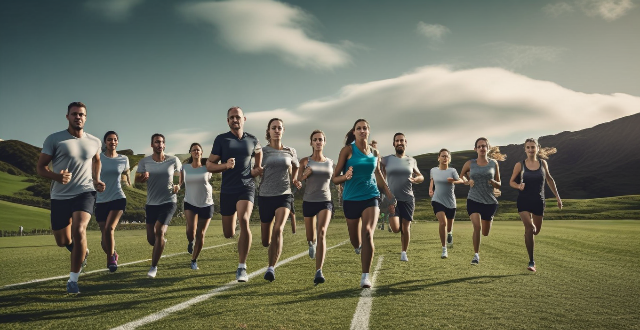
How important is hands-on experience when applying for sports coaching jobs ?
Hands-on experience is crucial for success in sports coaching jobs, providing practical knowledge and skills for effective athlete training and team leadership. It also helps coaches build strong relationships with athletes, demonstrate essential skills to potential employers, and engage in continuous learning for ongoing development. Employers are more likely to hire candidates who can demonstrate these skills through their previous experiences.

What types of data do sports performance tracking systems collect ?
Sports performance tracking systems collect a variety of data types, including physiological, biomechanical, technical, tactical, and psychological information. This data can help athletes and coaches analyze performance, identify areas for improvement, and make informed decisions about training and competition strategies. Other information such as environmental conditions, equipment used, and nutrition intake may also be collected to provide a comprehensive picture of an athlete's performance.

How does sports psychology differentiate between elite and average performers ?
In sports psychology, elite athletes are distinguished from their average counterparts by a combination of psychological traits, physiological factors, and environmental influences. Key differences include mental toughness, self-confidence, focus, emotional regulation, motivation, and the quality of support systems. Elite performers typically exhibit superior resilience, set ambitious goals, maintain better concentration, manage emotions effectively, possess intrinsic motivation, and train in environments that foster excellence. In contrast, average performers may struggle with these aspects, leading to suboptimal performance. Understanding these distinctions can help coaches, athletes, and sports psychologists develop strategies for improvement and success.

How can sports psychology help athletes manage stress and pressure during competitions ?
Sports psychology helps athletes manage stress and pressure during competitions by providing techniques and strategies to improve mental toughness, confidence, and focus. These techniques include goal setting, visualization, breathing exercises, mindfulness and meditation practices, and coping strategies such as problem-solving and emotion regulation. By implementing these tools, athletes can improve their performance and enjoy their sport more fully.

How can sports marketing be used to increase brand awareness ?
Sports marketing is a powerful tool for increasing brand awareness. It involves promoting a brand through sports events, athletes, or teams. This type of marketing can be used to reach a wide audience and create a strong emotional connection with consumers. In this article, we will discuss how sports marketing can be used to increase brand awareness. One way to increase brand awareness through sports marketing is by sponsoring events. By sponsoring a sports event, a brand can gain exposure to a large audience of passionate fans. This can include sponsoring a team, an individual athlete, or even an entire tournament. For example, Coca-Cola has been a long-time sponsor of the Olympics, which has helped them build their brand globally. Another way to increase brand awareness is by sponsoring a team or an individual athlete. This allows the brand to associate itself with the successes of the team or athlete. For example, Nike sponsors many successful athletes such as LeBron James and Cristiano Ronaldo, which helps them build their brand image as a leader in sportswear. Individual athlete sponsorships are also an effective way to increase brand awareness. By sponsoring an athlete, a brand can align itself with their personal brand and values. For example, Roger Federer has been sponsored by Rolex since 2006, which has helped both brands build their luxury image. Social media marketing is another effective way to increase brand awareness through sports marketing. By using social media platforms such as Twitter, Instagram, and Facebook, brands can reach a wider audience and engage with consumers in real-time. For example, during the Super Bowl, many brands run social media campaigns that generate buzz and increase brand awareness. Influencer marketing is also becoming increasingly popular in sports marketing. By partnering with influencers who have a large following on social media, brands can reach a new audience and build trust with potential customers. For example, many fitness influencers promote protein powders and supplements on their social media accounts, which helps these brands increase their brand awareness among fitness enthusiasts. In conclusion, sports marketing is a powerful tool for increasing brand awareness. By sponsoring events, teams, or individual athletes, brands can associate themselves with success and passion. Additionally, social media marketing and influencer marketing are effective ways to reach a wider audience and engage with consumers in real-time. By leveraging these strategies, brands can increase their brand awareness and build a strong emotional connection with consumers.

What countries are leading in wind energy production ?
The leading countries in wind energy production are China, the United States, Germany, India, and Spain. China has the largest installed capacity with 282 GW as of 2021, followed by the US with 119 GW, Germany with 60 GW, India with 38 GW, and Spain with 26 GW. These countries have seen rapid growth and innovation in their wind energy sectors, with key regions and states contributing significantly to their overall output. Their efforts demonstrate a commitment to reducing carbon emissions and transitioning towards sustainable energy sources.

How do force vectors influence an athlete's movement in sports biomechanics ?
Force vectors play a crucial role in sports biomechanics. The magnitude and direction of force vectors determine an athlete's acceleration, deceleration, and direction of motion. There are several types of force vectors, including internal, external, contact, frictional, and elastic forces. Understanding how these force vectors influence an athlete's movement is essential for improving performance and preventing injuries in sports. Coaches and athletes can use this knowledge to optimize their training programs and techniques.

How does the pressure of expectations from fans, media, and sponsors influence an athlete's performance at a competitive level ?
The text discusses the influence of expectations from fans, media, and sponsors on athlete performance. It outlines both positive and negative impacts of these expectations. Fan expectations can motivate athletes and boost their confidence but can also cause anxiety and distractions. Media expectations increase publicity and accountability but may lead to overwhelming pressure and misrepresentation. Sponsor expectations provide financial support and brand alignment opportunities but can result in contractual pressures and distractions. Overall, managing these external pressures effectively is crucial for athletes to maintain optimal performance levels.

What are some tips for leading a successful study group ?
Leading a successful study group requires careful planning, effective communication, and strong leadership skills. To achieve this, it is important to set clear objectives, organize meetings effectively, encourage active participation, foster collaboration and teamwork, and evaluate progress regularly. By following these tips, you can create a productive and enjoyable learning experience for all members of your study group.

Are there any risks or drawbacks associated with sport psychology counseling ?
Sport psychology counseling is a specialized form of psychological intervention that aims to enhance athletic performance, improve mental toughness, and foster personal growth in athletes. While the benefits of sport psychology counseling are well-documented, it is essential to consider any potential risks or drawbacks associated with this type of intervention. The risks and drawbacks include: - Lack of qualified professionals - Overreliance on counseling - Inappropriate interventions - Ethical considerations - Financial costs - Cultural differences To mitigate these risks, athletes should seek out qualified professionals with appropriate certifications and experience in sport psychology counseling, communicate openly with their counselor about their goals and concerns, choose counselors who prioritize ethical practices, explore options such as group sessions, online counseling, or sliding scale fees to reduce costs, and counselors should strive to understand and respect the cultural backgrounds of their clients and adapt their approaches accordingly. By addressing these issues proactively, athletes can maximize the benefits of sport psychology counseling while minimizing any potential negative effects.

Can sport monitoring technology help prevent injuries ?
Sport monitoring technology has become increasingly popular in recent years, with many athletes and coaches using it to improve performance and prevent injuries. This technology includes wearable devices such as fitness trackers, heart rate monitors, and GPS tracking systems, as well as more advanced technologies like motion capture systems and force plates. Sport monitoring technology works by collecting data on an athlete's movements, heart rate, and other physiological factors. This data is then analyzed to provide insights into the athlete's performance and identify areas where they may be at risk of injury. By tracking an athlete's movements and physiological factors, sport monitoring technology can identify potential injury risk factors early on, help coaches create personalized training plans for each athlete based on their individual needs and abilities, monitor recovery periods between sessions, and educate athletes and coaches about injury prevention strategies. Overall, there is evidence to suggest that sport monitoring technology can help prevent injuries in several ways. However, it is important to note that no technology can completely eliminate the risk of injury, and proper training, conditioning, and safety measures should always be prioritized.

What companies are leading the way in commercial spaceflight ?
Commercial spaceflight is a growing industry with several key players, including SpaceX, Blue Origin, Virgin Galactic, Boeing, and Rocket Lab. Each company has its own mission and achievements, ranging from successful launches and landings of rockets to developing new spacecraft for future missions. These companies are leading the way in advancing humanity's exploration and utilization of space.